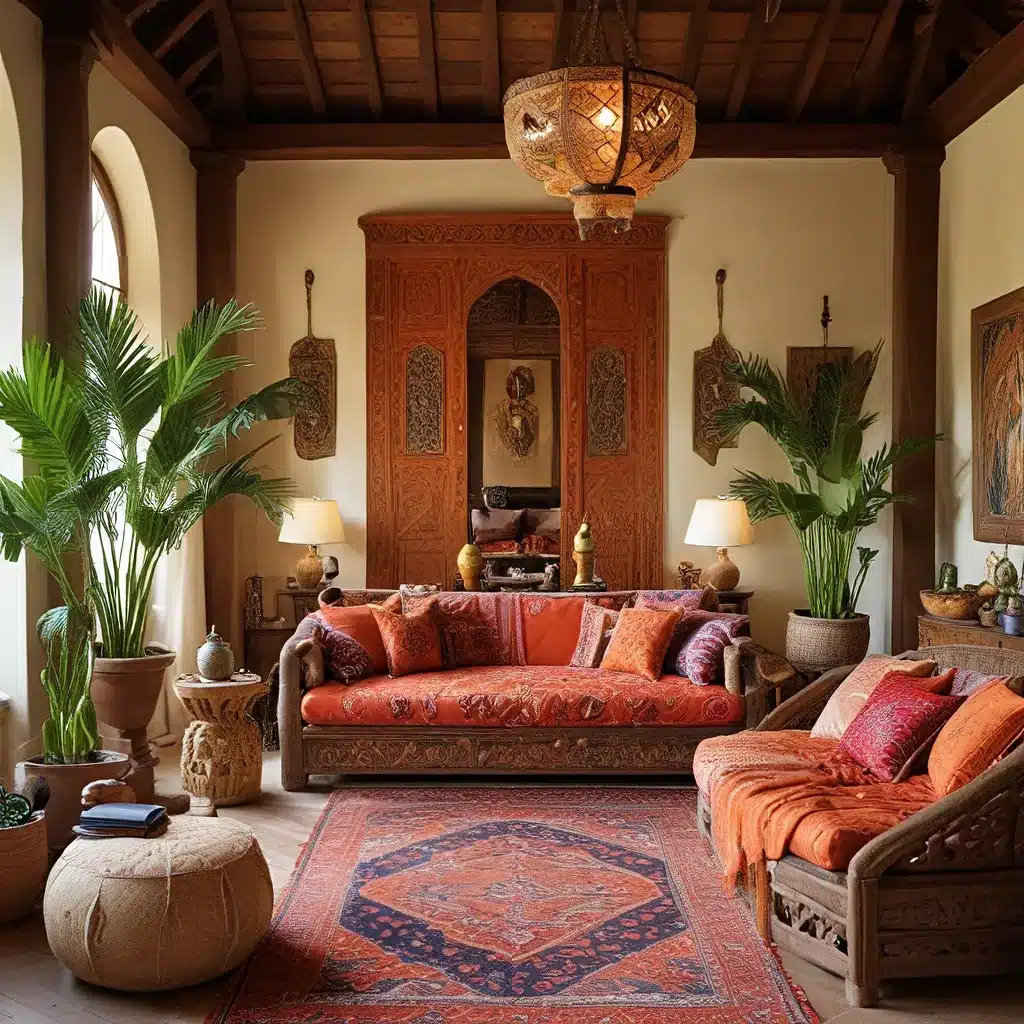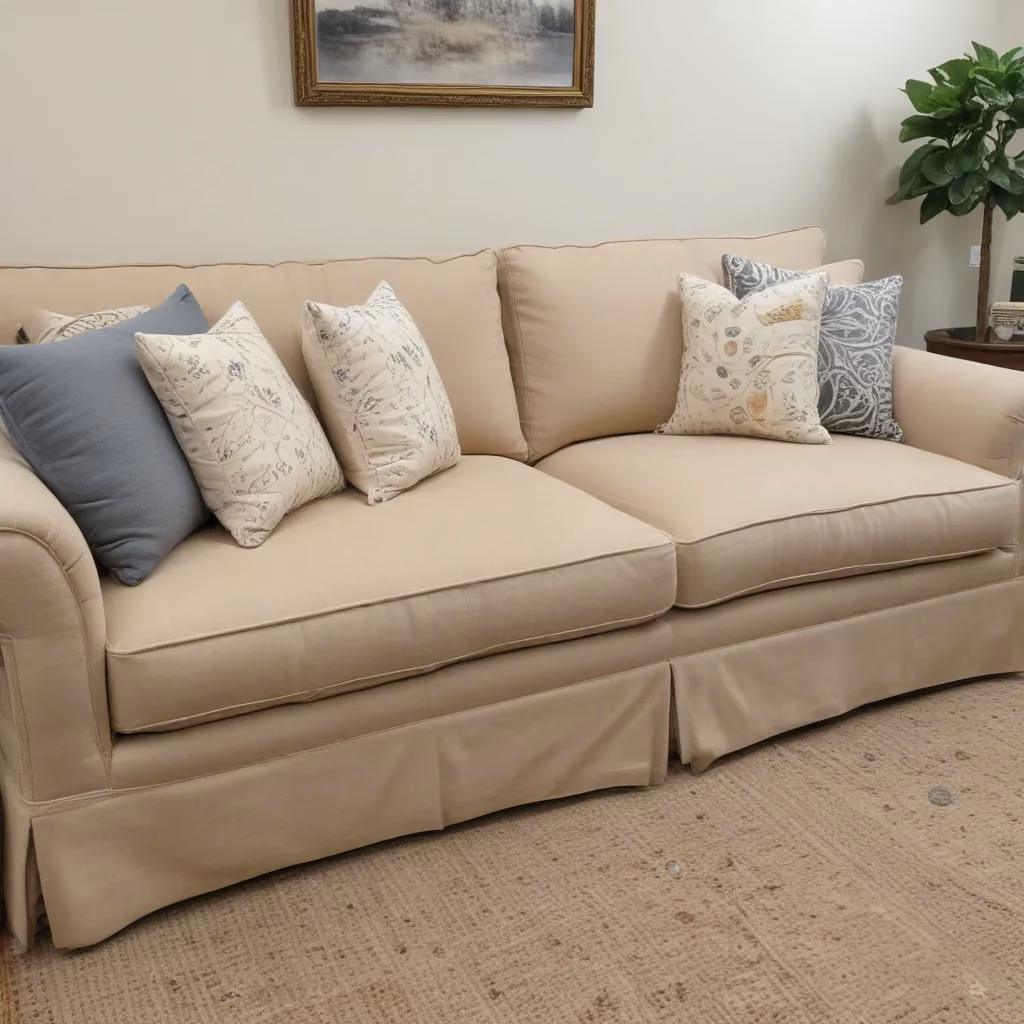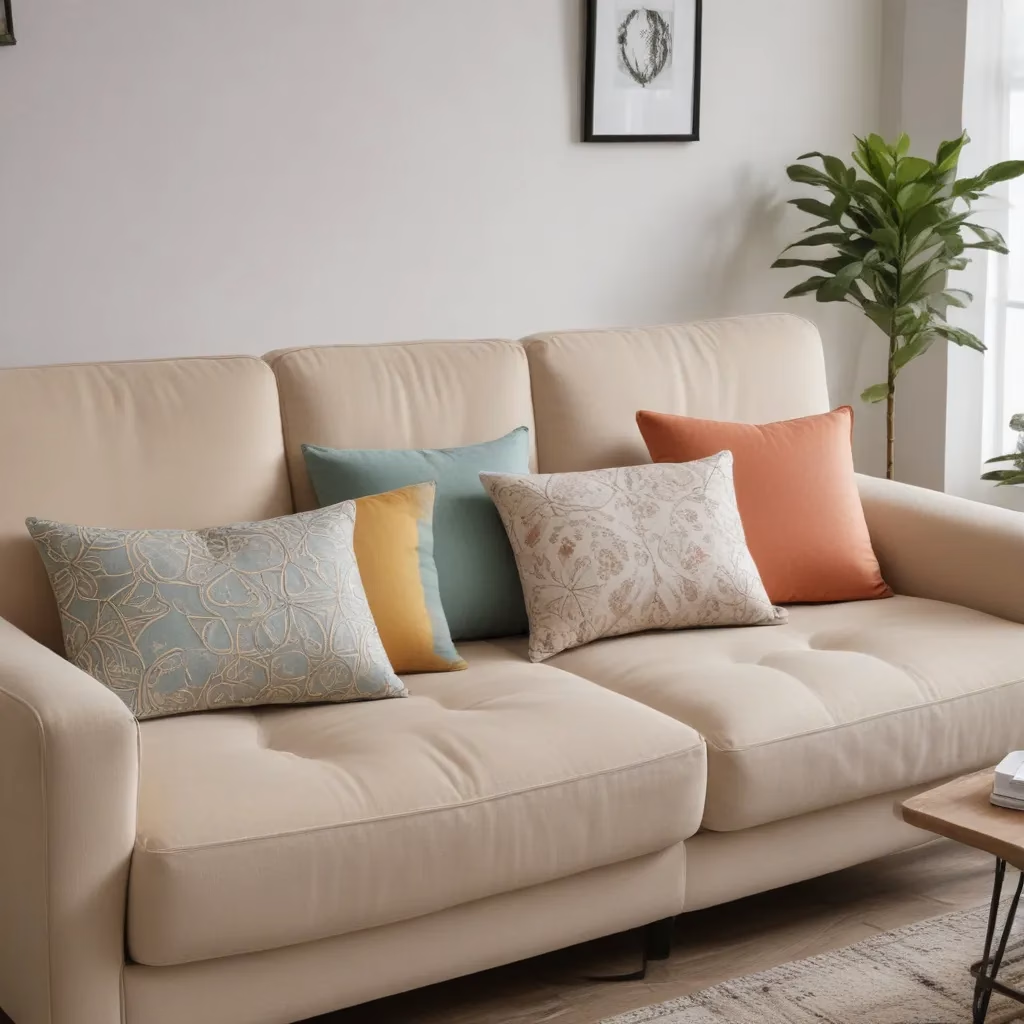
Bringing the World Home Through Comfort and Design
My first trip to Disney World, I almost missed the iconic fireworks display. Instead, I became utterly transfixed by the Enchanted Tiki Room and its tropical bird chorus. My sisters were furious, but I couldn’t help it – that song had captured my imagination, and I had to experience it in person. Of course, I ended up falling asleep amidst the lush foliage and enchanting melodies, but the die was cast. Tiki culture had found its way into my heart.
Little did I know then that I was just one of many Americans whose wanderlust and sense of adventure had been sparked by these exotic, Polynesian-inspired spaces. The tiki craze has ebbed and flowed over the decades, but its enduring appeal reveals a deep-rooted desire to escape the everyday and discover the wonders of faraway lands.
As the co-founder of Sofas Spectacular, I’ve seen firsthand how this global, wanderlust-fueled aesthetic has influenced interior design trends. From bold tropical prints to intricate carved accents, the influence of diverse cultures can be seen in the comfort and style of the furnishings we create.
Tiki Takeover: The Rise, Fall, and Resurgence of a Trend
The tiki bar phenomenon first took root in the early 20th century, as Americans became increasingly fascinated by the Pacific Islands. But it wasn’t until after World War II, when GIs returned home from the Pacific theater, that the tiki craze really took off. Tiki bars sprung up across the country, offering rum-based cocktails and an escapist, exotic ambiance – a slice of Polynesian paradise amidst the mundanity of postwar life.
The next few decades saw Hawaii becoming a state, new rum-based drinks being created, and tiki bars becoming a fixture of the American landscape. We were collectively yearning for adventure and discovery, and these tropical lounges provided the perfect antidote.
But the tiki trend wasn’t without its problems. The inspiration for these spaces was heavily rooted in cultural appropriation, taking the imagery and symbols of Polynesian cultures without regard for their true meaning and significance. The “tiki” statues that adorned these bars were often cheap imitations, rather than authentic representations of sacred figures. And the overarching “tiki” aesthetic was more of a fantasy construct than a true reflection of Pacific Island cultures.
In recent years, this troubling history has come to the forefront, with some tiki bar owners facing public pressure to rebrand or reconsider their approach. As one co-owner in Chicago acknowledged, today’s tiki bars are aiming to be “more conscientious and more considerate.” But the kitschy, nostalgic appeal of these spaces remains a double-edged sword – we want to celebrate the vibrant cultures that inspired them, while also grappling with the realities of how they were co-opted and commodified.
Wanderlust and Wonder: Embracing Global Influences in Interior Design
Despite the complex history of tiki culture, the desire to infuse our spaces with a sense of global wonder and adventure remains strong. And as someone who has been deeply influenced by my own experiences of travel and cultural discovery, I’m driven to find ways of honoring these influences in a thoughtful, respectful manner.
The lush, tropical aesthetic of tiki bars has certainly made its mark on the world of interior design. Bold tropical prints, carved wooden accents, and a general sense of exotic escapism have become staples in many homes and commercial spaces. But the true power of global influences lies in their ability to inspire us to look beyond the surface and dive deeper into the rich tapestry of human culture.
Take, for example, the Erin Fetherston collection that drew inspiration from destinations like Morocco, Seville, and Paris. The fringe, babouche slippers, and bold color palette evoked a sense of worldly sophistication and wanderlust, while still maintaining a cohesive, feminine aesthetic. It’s a prime example of how we can celebrate diverse cultural influences without resorting to clichés or caricatures.
Similarly, in my own design work, I strive to infuse our custom sofas and furnishings with a global sensibility that goes beyond mere surface-level imitation. I might draw inspiration from the intricate textiles of West Africa, the carved wooden details of Southeast Asian architecture, or the vibrant color palettes of Latin American folk art. But the goal isn’t to create a patchwork of unrelated cultural references – it’s to synthesize these influences into a harmonious, holistic design that feels both familiar and extraordinary.
Crafting a Sense of Place through Comfort and Style
One of the challenges of incorporating global influences into interior design is finding the right balance between authenticity and accessibility. We want our spaces to feel like genuine reflections of the world’s diverse cultures, but we also want them to be comfortable, livable, and relatable to our everyday lives.
That’s why I place such a strong emphasis on craftsmanship and materiality in my work. Rather than simply slapping on some tiki-inspired decor, I work closely with our artisans to carefully select fabrics, finishes, and construction techniques that pay homage to traditional methods while still meeting the needs of modern living.
For instance, our Explorer Sofa features hand-carved wooden legs inspired by the intricate designs of Indonesian furniture, paired with a plush, jewel-toned velvet upholstery that evokes the richness of royal textiles. The result is a piece that feels simultaneously global and grounded, transporting you to far-flung lands while also providing the comfort and functionality you’d expect from a premium sofa.
Similarly, our Wanderlust Sofa draws inspiration from the vibrant colors and bold patterns of Latin American folk art, with a hand-woven textured fabric that mimics the look and feel of traditional artisanal textiles. But rather than simply replicating these design elements, we’ve adapted them to create a piece that is as durable and livable as it is visually striking.
Honoring the Past, Shaping the Future
As I reflect on my own journey of discovery, from that first enchanting visit to the Tiki Room to the global influences that now infuse my design work, I’m struck by the power of cultural exchange and the ways in which it can enrich our lives.
Like the fashion designer Kim Jones, I’ve found that the more I immerse myself in the world’s diverse cultures, the more I’m able to translate those experiences into unique and meaningful design. It’s not about simple imitation or surface-level appropriation – it’s about truly understanding the history, symbolism, and craftsmanship that underpin these global influences, and finding ways to honor and elevate them.
In a world that is increasingly interconnected, the ability to weave together disparate cultural threads into a cohesive, captivating whole has become a powerful creative skill. And as we continue to grapple with the complex legacies of cultural exchange, it’s more important than ever to approach these influences with empathy, nuance, and a deep respect for their origins.
So as you sink into the plush cushions of one of our globally-inspired sofas, I hope you’ll be transported not just to distant lands, but also to a deeper understanding of the richness and diversity that makes our world such an endlessly fascinating place. After all, the true magic of global style lies not in the superficial trappings, but in the stories, histories, and traditions that breathe life into every design.



